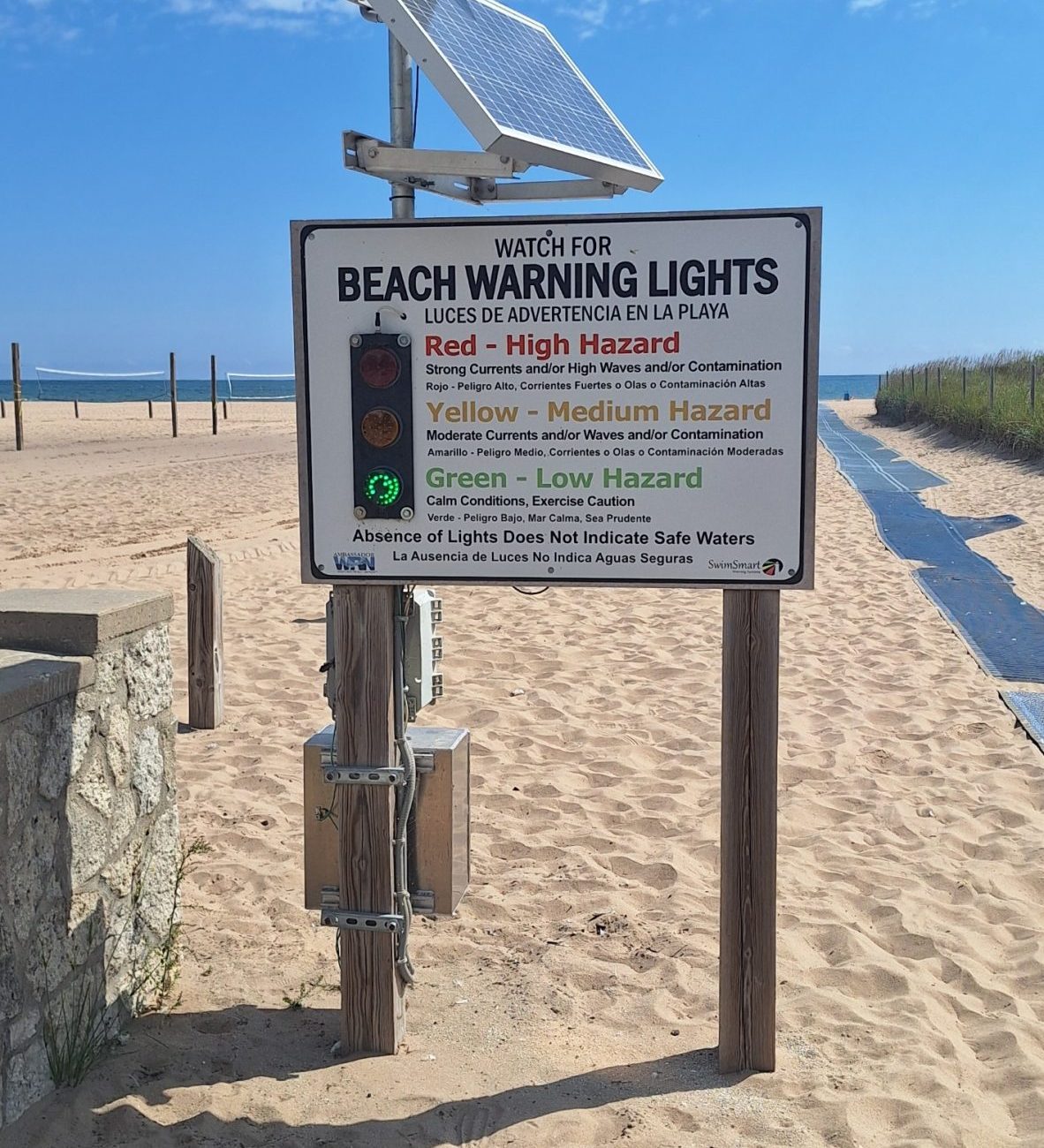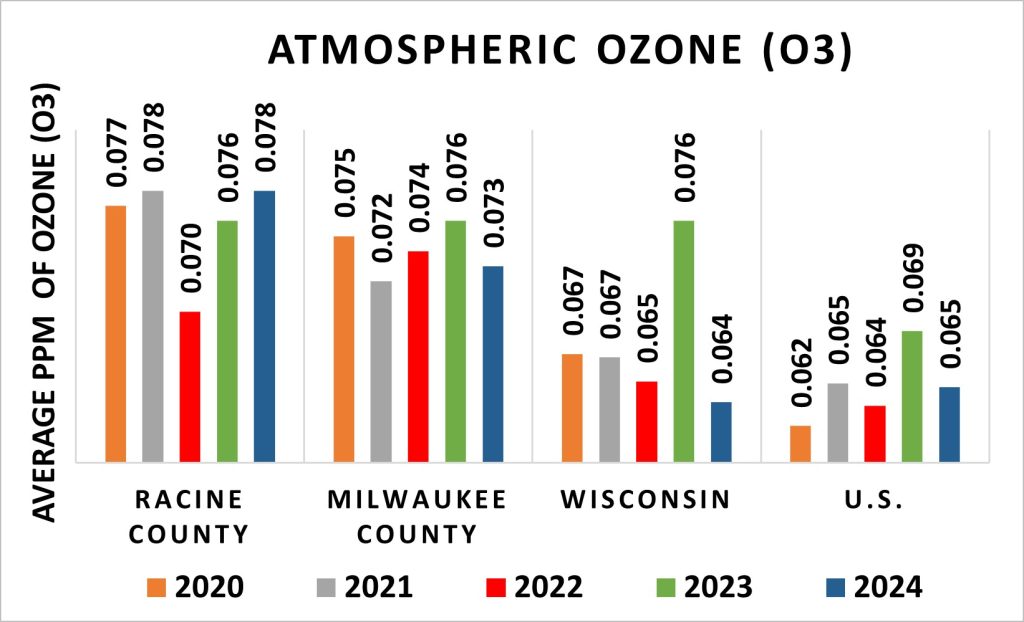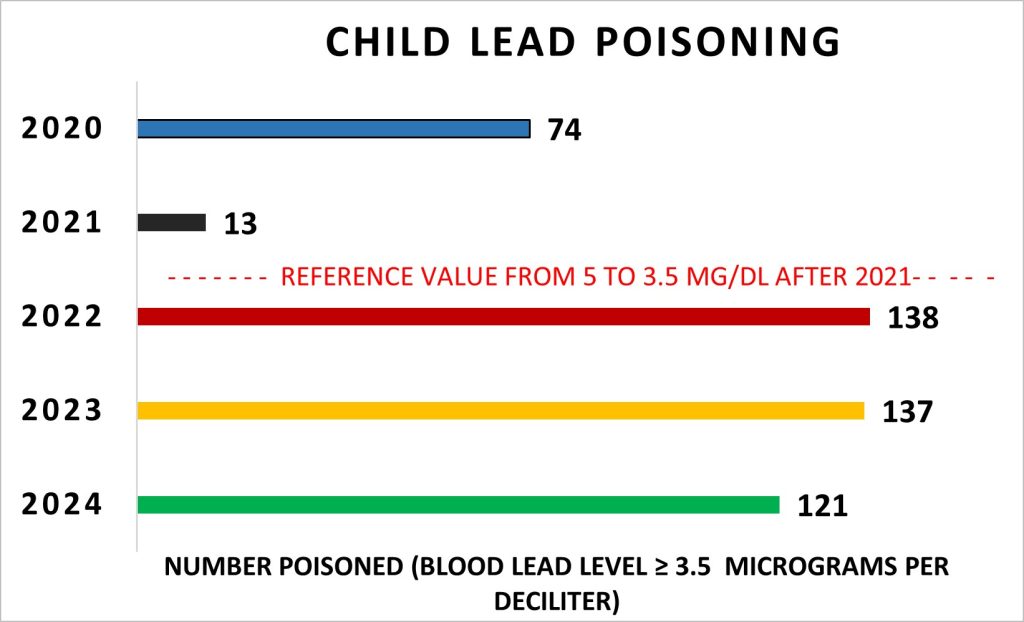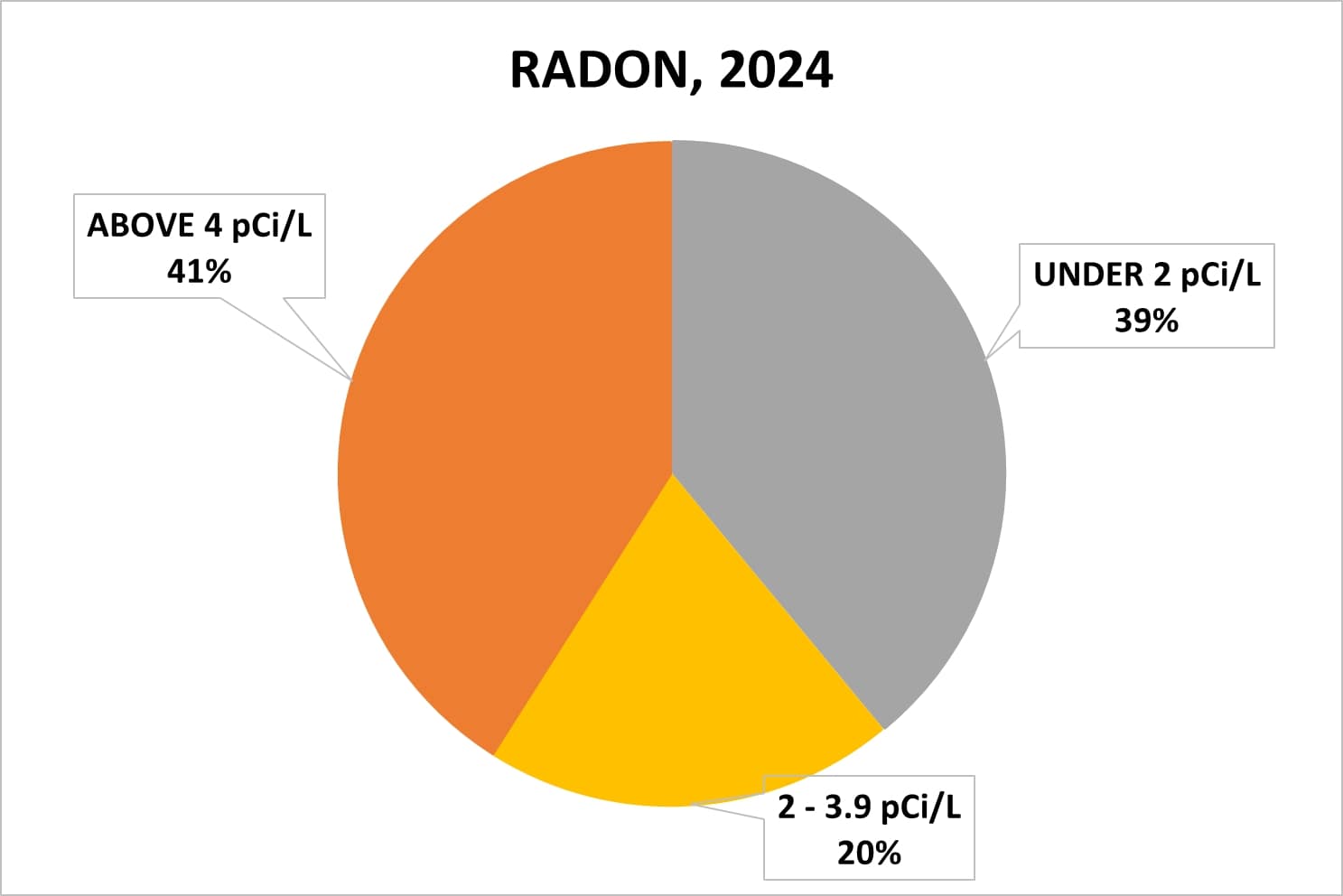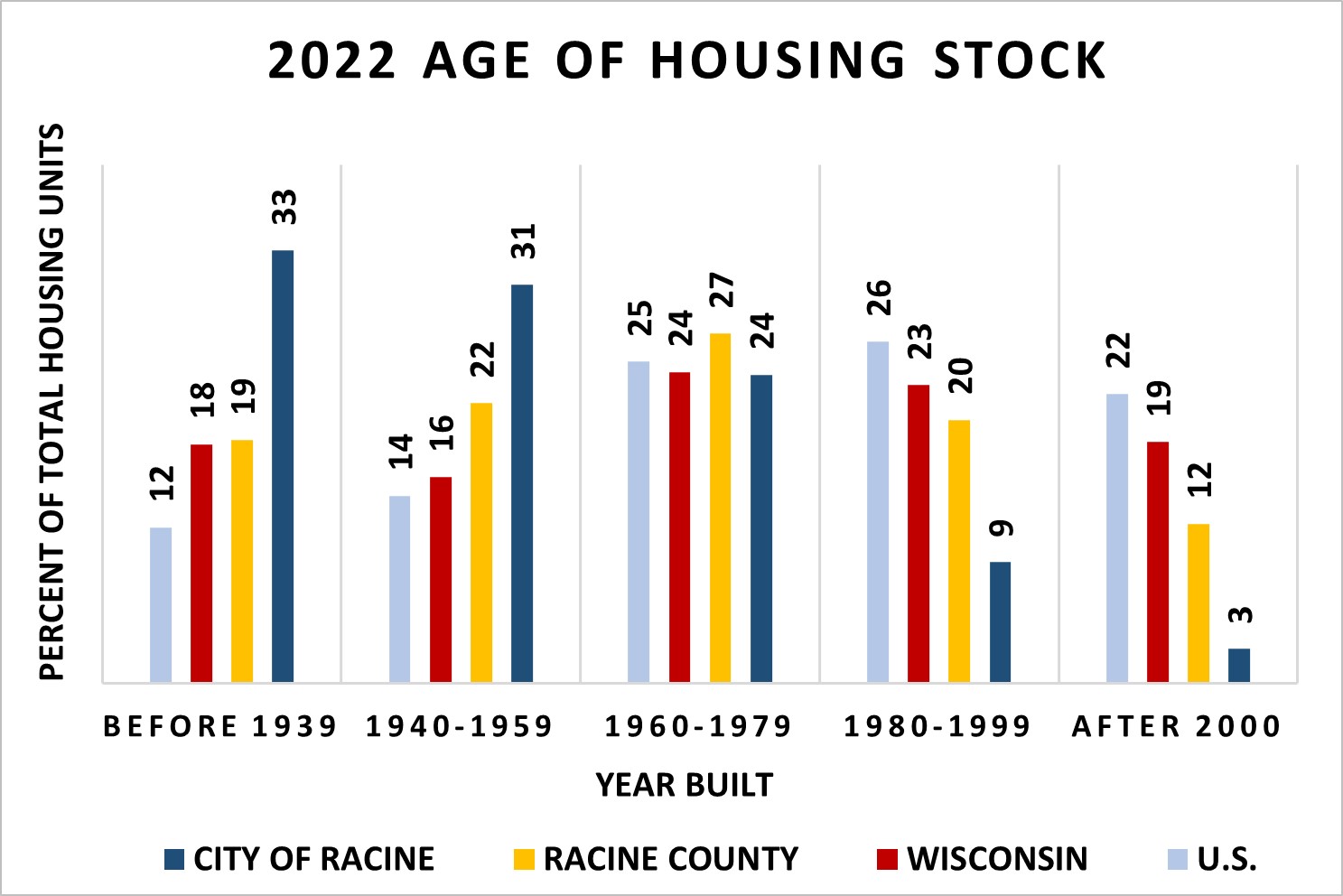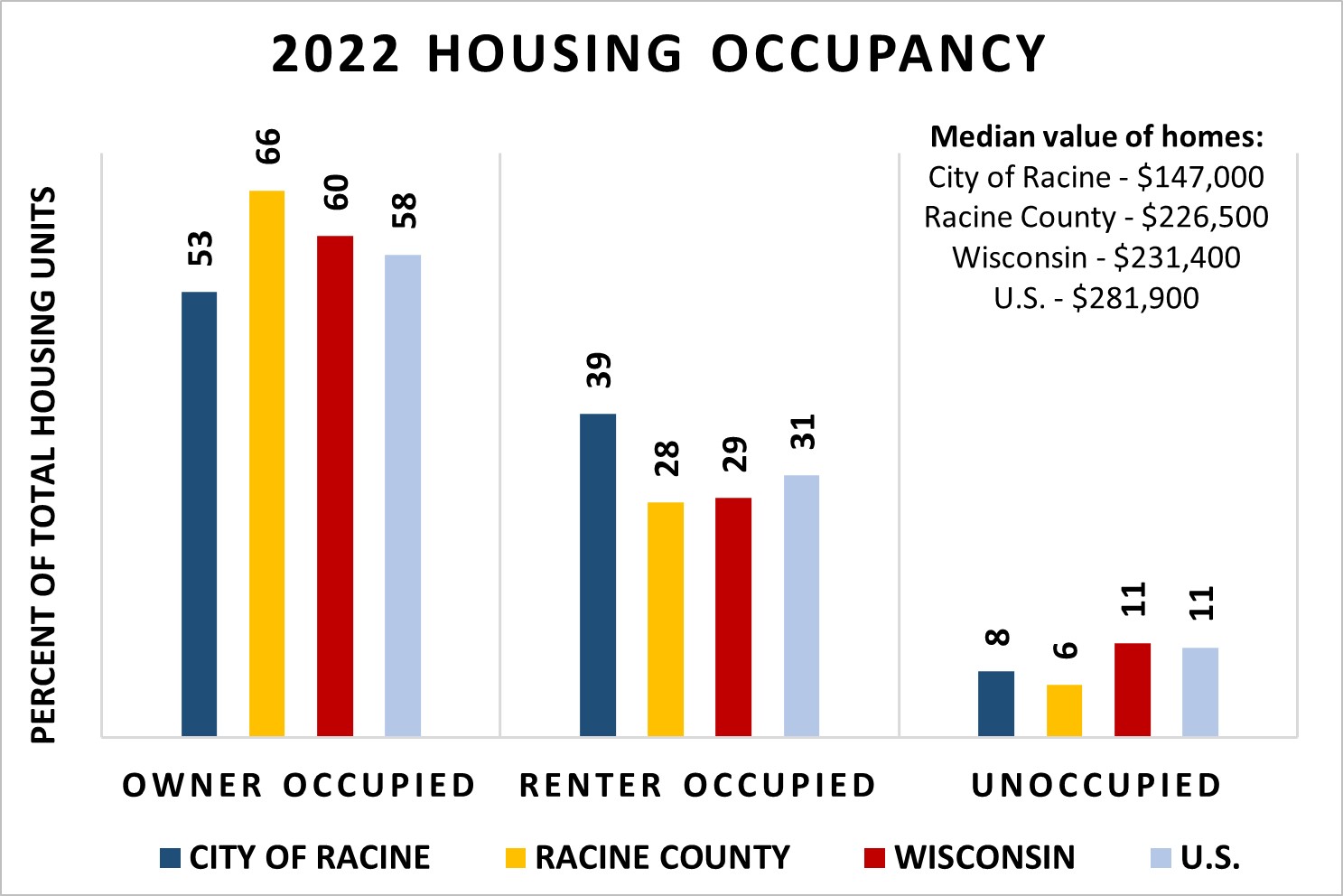Choose Services
Physical Environment
Racine Environmental Health
The physical environment plays an important role in individual and community health. Reducing hazardsA danger or risk. in the air, soil, and homes can have significant positive effects on the health of Racine’s citizens. This section contains information about specific hazardsA danger or risk. in the physical environment.
Air Pollution
Ozone, while crucial for protecting the Earth from harmful UV, is damaging and harmful to humans when in the air we breathe. It has been linked to affecting the respiratory, cardiovascular, and central nervous system. This pollutant has increased in prevalence in the last few years in Racine County and is now higher than Milwaukee County, the State of Wisconsin, and the U.S.
Source:
Lead Poisoning
The number of lead poisoning cases reported in children living in the City of Racine has decreased over recent years due, in part, to increased blood lead level testing. However, after 2021, lead poisoning cases increased due to CDC reference value changing from 5 to 3.5 mg/dl, causing more children to be reported. Efforts are ongoing to test every at-risk child in order to reduce the number of children experiencing lead poisoning.
*Poisoned means a blood lead level of 3.5 micrograms/deciliter.
Source:
City of Racine Public Health Department
Radon
The average indoor radon level for Racine County is 4.8 picoCuries per Liter of air, or pCi/L. The highest acceptable level of radon gas is considered to be 4 pCi/L, making Racine County’s average higher than acceptable. It is also above the average national indoor radon level of 1.3 pCi/L. In 2024, 41% of homes in Racine County experienced dangerous levels of radon, down from 47% of homes in 2018.
Source:
Housing
2022 Age Of Housing Stock
The age of homes that people live in can affect their health. Older homes may contain lead paint and pipes, asbestos, and be in need of maintenance or repairs. As of 2022 in the City of Racine, 64% of homes were built prior to 1960 and may contain materials that can be detrimental to residents’ health. Racine County, the State of Wisconsin and United States have smaller percentages of homes (40% 34%, and 27%, respectively) built before 1960’s.
Source:
2022 Housing Occupancy
During 2022, the City of Racine had only 53% of properties occupied by the owner, as compared to 66% for Racine County, 60% for the State of Wisconsin, and 58% for the United States. The City of Racine has a much higher rate (8% to 11% higher) of being occupied by a renter than other regions. The percentage of unoccupiedEmpty, not currently used, or not busy homes is approximately equal for all regions.
Source:



